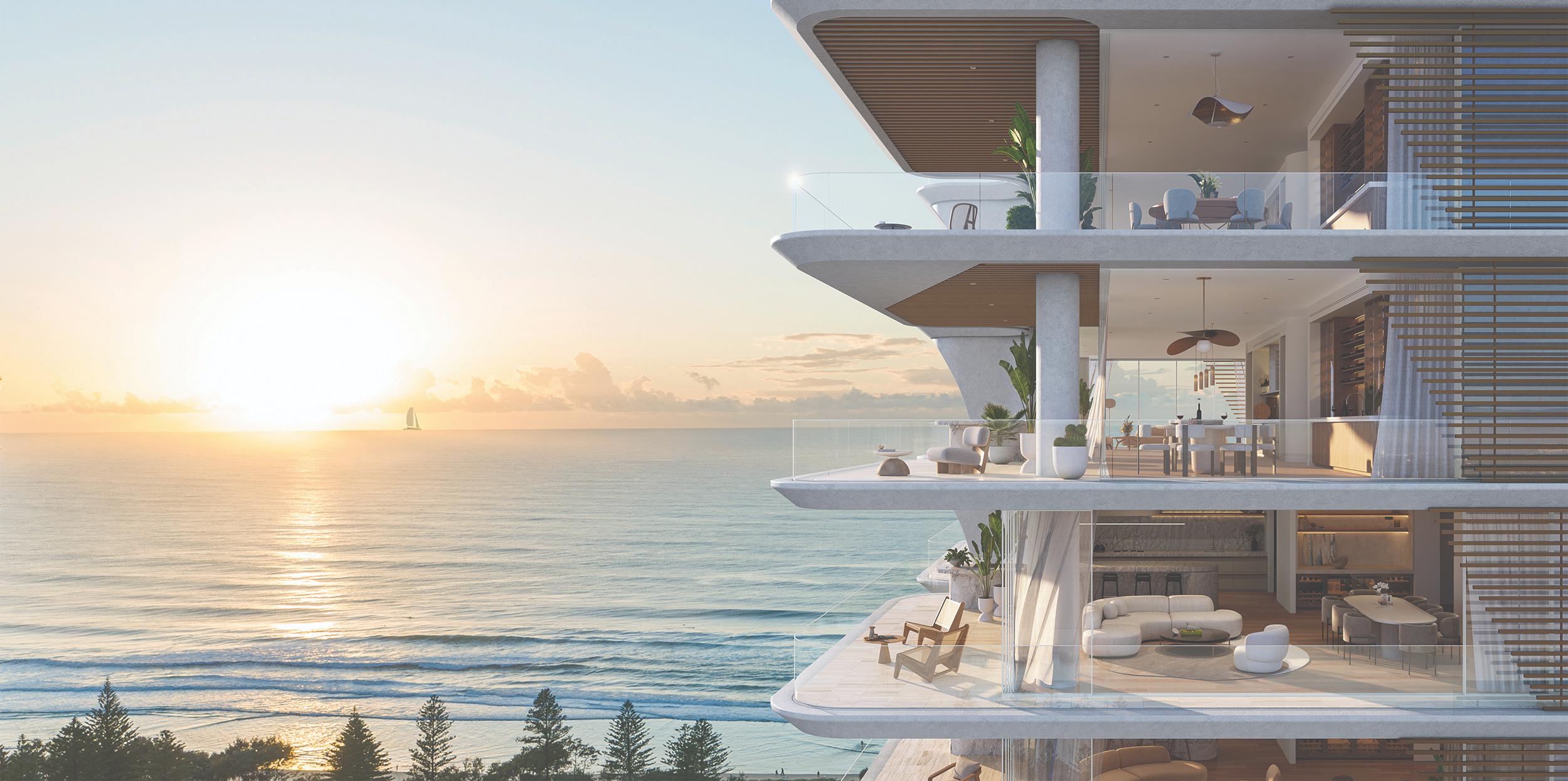Evolution of the Gold Coast Apartment Market
June 12 2024

High-rise buildings have long been a defining feature of the Gold Coast, skyline, making it one of the most iconic and recognisable urban landscapes in Australia.
The city saw its first significant high-rise developments in the 1970s. Buildings from this era, including Iluka and St Tropez, were among the first to reach 20 storeys.
These developments coincided with the area’s rising popularity as a holiday destination, driven by the growth of surfing and tourism.
The 1980s marked a significant boom in high-rise construction, fuelled by Japanese property investments and the development of modern theme parks like Dreamworld and SeaWorld. The Gold Coast Airport terminal, opened in1981, further established the city as a leading holiday destination.
By the end of the decade, most vacant land within 10 kilometres of the coast had been Developed.
“There was so much development going on in the eighties,” says Kollosche sales agent Duncan McInnes, who has been marketing projects off the plan in Queensland for more than 40 years. “Back then, the buyers were mostly holidaymakers from Sydney or Melbourne. They were here for a short time and for a good time.”
Fast forward to today, and the Gold Coast skyline features approximately 800 high-rise buildings, stretching from Runaway Bay in the north to Coolangatta in the south.
However, in 2024, developers are shifting away from high-rise towers in favour of smaller, more boutique buildings that offer an exclusive, residents-only experience.
The latest K Property Insights report – Gold Coast Quarterly Market Outlook – reveals that only two approved projects on the Gold Coast over the past 12 months held over 50 dwellings.
Rising building costs and a shortage of Tier 1 builders are largely driving this trend, but consumers are also a contributing factor.
As Australia’s population ages, an increasing number of older Australians are choosing to ‘rightsize’ into more manageable homes.

Boomers are capitalising on the increased value of their long-held family homes and trading them for low-maintenance luxury apartments.
Mr McInnes sells residences off-the-plan for the boutique project Drift, currently under construction in Main Beach, and notes that a remarkable 95 per cent of buyers are from the Gold Coast and Brisbane, the majority of them downsizers.
“Drift is a permanent residential building with only 50 residences, which buyers like,” he says.
“For those who are downsizing, they prefer the generous proportions of the Drift apartments, the high level of finish, the concierge, and the fact that a whole floor is devoted to amenities. They have it all.”
However, as with all trends, this too may pass if the Gold Coast is to meet the growing need for new housing.
According to the Gold Coast Quarterly Market Outlook, the city is currently growing by around 20,000 new residents per annum, creating a need to build approximately 9,500 new dwellings each year across the area.
“Given the shortage of land and the desirability of living and working on the Gold Coast, I believe the only way we aregoing to meet the demand is to build vertically,” says Mr McInnes.
“There would need to be some incentives to move developers in that direction.”
Based on estimates from 2023, some 37,625 apartments or townhouses have active approvals on the Gold Coast but have not yet been built.

According to the report, this is a reflection of the fact that delivering new mid-to-high rise projects is increasingly difficult.
The main challenges, including high and rising construction costs and a lack of local building trades, is unlikely to change over the short to medium term, given the high level of Olympics-oriented infrastructure construction taking place across South East Queensland.
While the glut of high-rise towers once created an oversupply problem on the Gold Coast, the opposite is tipped to be the case for the foreseeable future as developers and builders struggle to keep pace with demand.
“I’m at an age and a level of property experience where I’ve seen the massive fluctuations within the Gold Coast market, where historically it has become quickly oversupplied,” says Mr McInnes.
“Those days are now gone. It is very unusual times we’re in.”